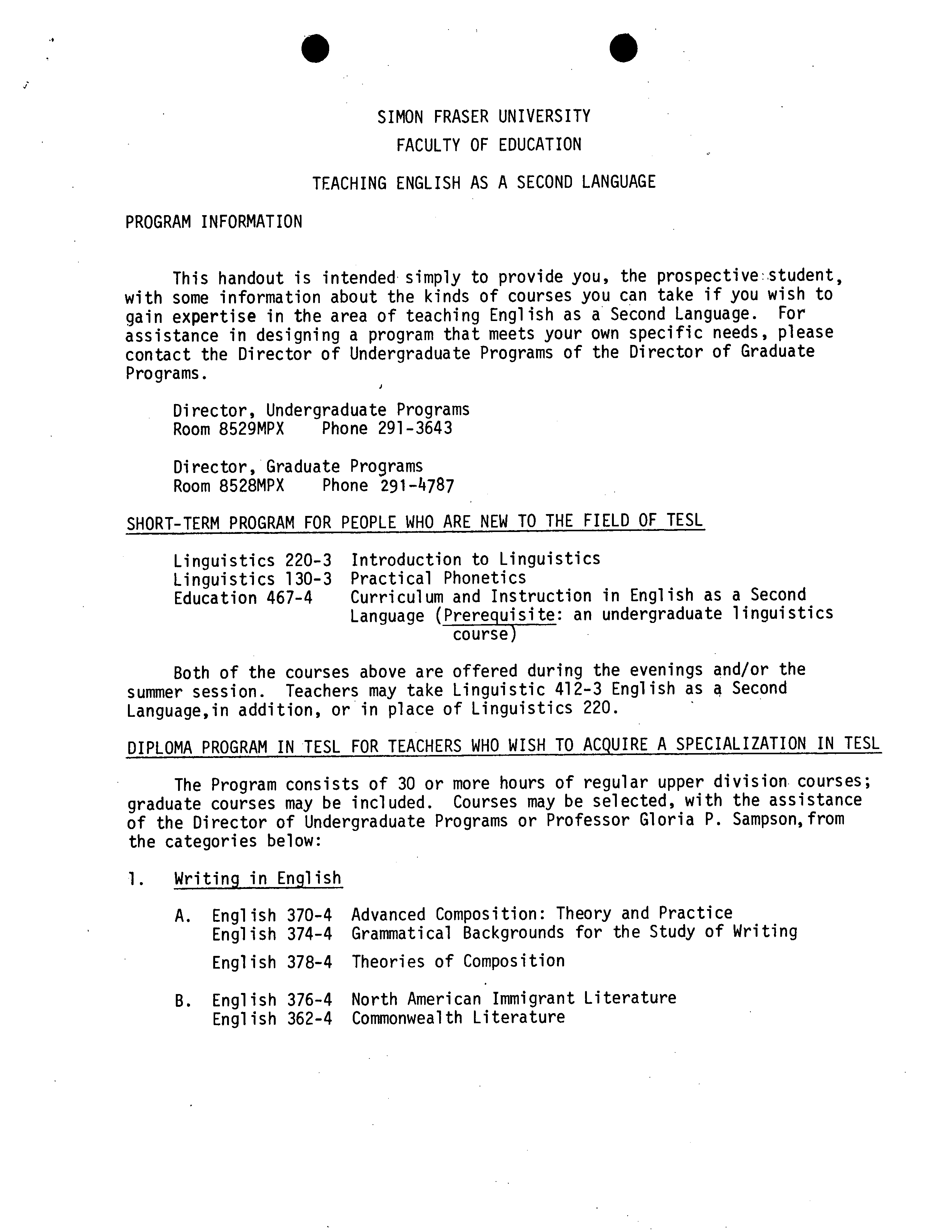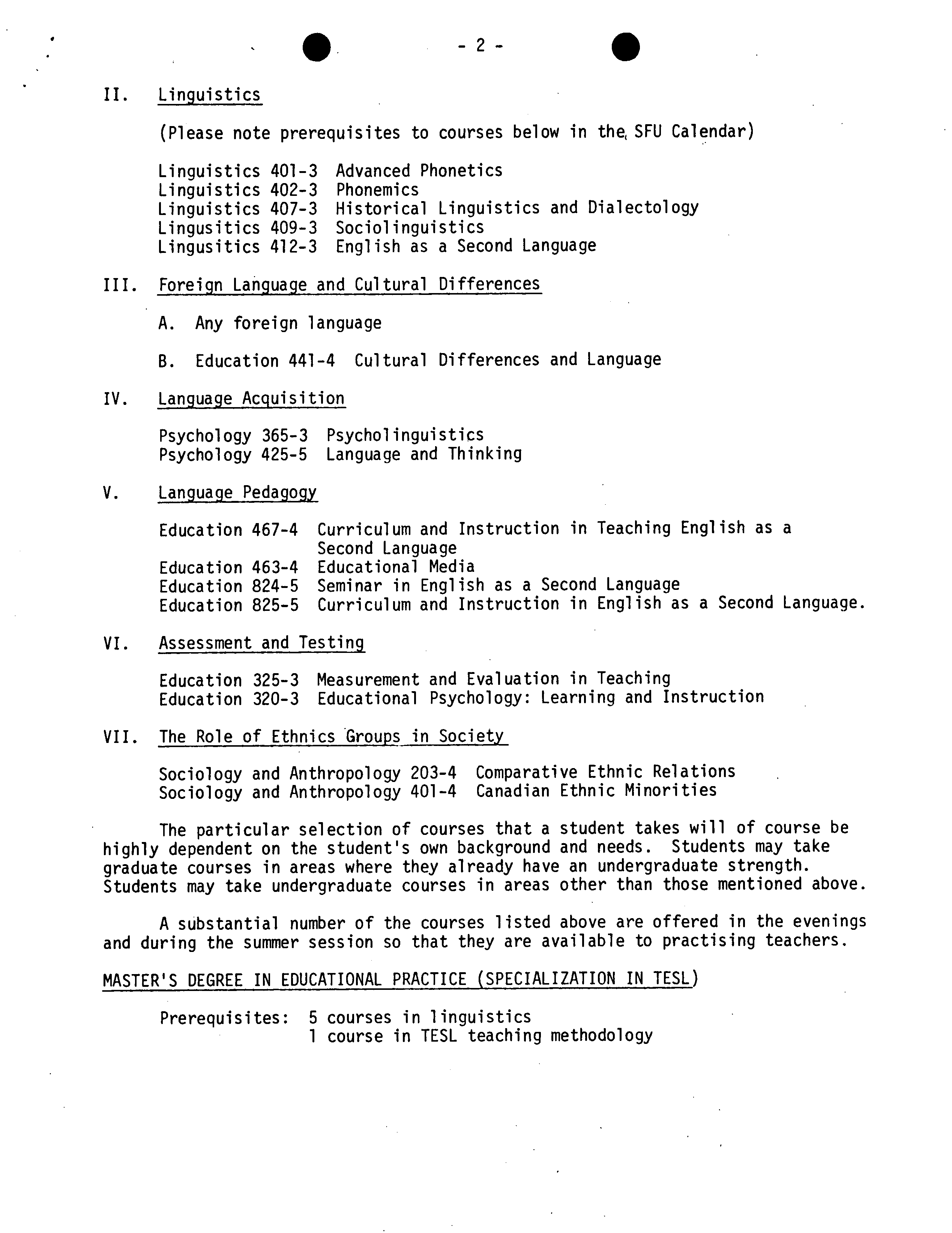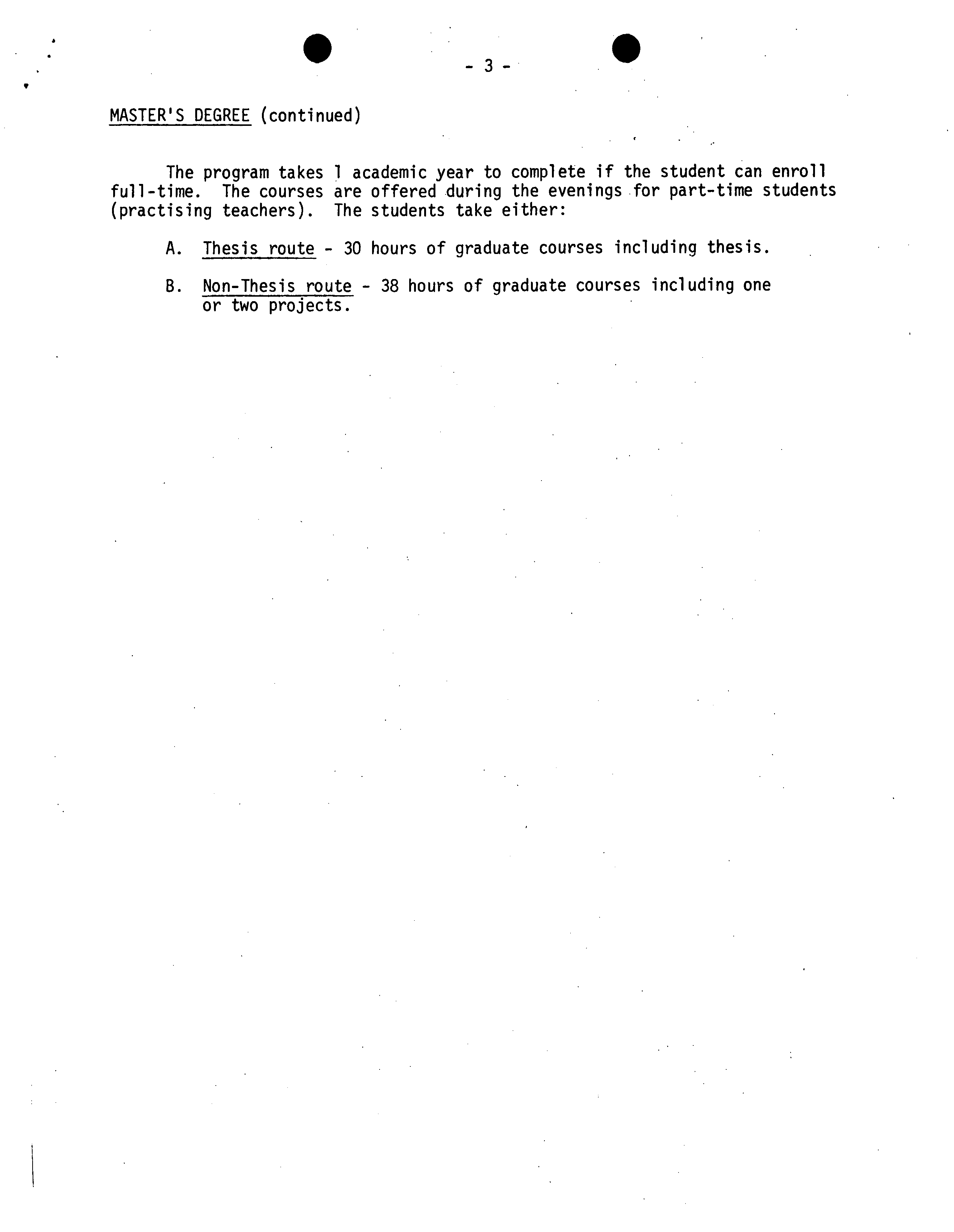EDUCATION
467?
CURRICULUM AND INSTRUCTION-IN TEACHING ENGLISH AS A SECOND LANGUAGE
FALL 1978
Gloria P. Sampson, Associate Professor
Office: 6314
Phone: 291-3627
Meeting Times:
Ev. Grp. 01
?
Tuesday ?
18:00 - 19:50 ?
AQ 5100
20:00 - 21:50
Prerequisite:
Any course in linguistics.
Course Aims.
By the end of this course you should be able to:
1.
Select ESL curricular materials that are appropriate for use with
students of varying ages, linguistic backgrounds and cultural backgrounds.
2.
Implement ESL activities in a classroom setting.
3.
Use the diagnostic tool of error analysis to evaluate a learner's
competence in English.
4.
Create language - learning tasks for enrichment or remedial purposes.
5.
Defend the use of a teaching approach that views the ESL. learner as
linguistically and culturally different - not linguistically and culturally
deficient.
Assignments:
1.
Diagnosing language problems.
2.
Lesson plan.
3.
Unit plan.
Students in this class can decide '4hith level or levels they wish to
focus on in their assignments : (a) early childhood, (b) elementary, (c)
secondary, or (d) adult.
There is no final exam - a major
assignment
is given instead.
Textbooks:
Sampson, Gloria
P. New Routes to English, Level I (Teacher's Annotated
Edition, Student Text, Workbook). Don Mills, Ont., Collier Macmillan
Canada Ltd., 1978.
Croft, Kenneth (ed.) Readings on English as a Second Language. Prentice
Hall of Canada.
Burt, Marina K. and Carol Kiparsky. The Goof icon: A Repair Manual For
Eng
li
?
Rowley: Mass,, Newbury House Pubi.
Pca
.
?
S
SIMON FRASER UNIVERSITY
FACULTY OF EDUCATION
TEACHING ENGLISH AS A SECOND LANGUAGE
PROGRAM INFORMATION
This handout is intended simply to provide you, the prospectivestudent,
with some information about the kinds of courses you can take if you wish to
gain expertise in the area of teaching English as a Second Language. For
assistance in designing a program that meets your own specific needs, please
contact the Director of Undergraduate Programs of the Director of Graduate
Programs.
Director, Undergraduate Programs
Room 8529MPX ?
Phone 291-3643
Director, Graduate Programs
Room 8528MPX ?
Phone 291-4787
SHORT-TERM PROGRAM FOR PEOPLE WHO ARE NEW TO THE FIELD OF TESL
Linguistics 220-3 Introduction to Linguistics
Linguistics 130-3 Practical Phonetics
Education 467-4
?
Curriculum and Instruction in English as a Second
Language (Prerequisite: an undergraduate linguistics
course)
Both of the courses above are offered during the evenings and/or the
summer session. Teachers may take Linguistic 412-3 English as a Second
Language,in addition, or in place of Linguistics 220.
DIPLOMA PROGRAM IN TESL FOR TEACHERS WHO WISH TO ACQUIRE A SPECIALIZATION IN TESL
The Program consists of 30 or more hours of regular upper division courses;
graduate courses may be included. Courses may be selected, with the assistance
of the Director of Undergraduate Programs or Professor Gloria P. Sampson,from
the categories below:
1. ?
Writing in English
A.
English 370-4 Advanced Composition: Theory and Practice
English 374-4 Grammatical Backgrounds for the Study of Writing
English 378-4 Theories of Composition
B.
English 376-4 North American Immigrant Literature
English 362-4 Commonwealth Literature
-2- ?
S
II. ?
Linguistics
(Please note prerequisites to courses below in the, SFU Calendar)
Linguistics 401-3 Advanced Phonetics
Linguistics 402-3 Phonemics
Linguistics 407-3 Historical Linguistics and Dialectology
Lingusitics 409-3 Sociolinguistics
Lingusitics 412-3 English as a Second Language
III. Foreign Language and Cultural Differences
A.
Any foreign language
B.
Education 441-4 Cultural Differences and Language
IV. ?
Language Acquisition
Psychology 365-3 Psycholinguistics
Psychology 425-5 Language and Thinking
V.
?
Language Pedagogy
Education 467-4 Curriculum and Instruction in Teaching English as a
Second Language
Education 463-4 Educational Media
Education 824-5 Seminar in English as a Second Language
Education 825-5 Curriculum and Instruction in English as a Second Language.
VI. ?
Assessment and Testing
Education 325-3 Measurement and Evaluation in Teaching
Education 320-3 Educational Psychology: Learning and Instruction
VII. The Role of Ethnics Groups in Society
Sociology and Anthropology 203-4 Comparative Ethnic Relations
Sociology and Anthropology 401-4 Canadian Ethnic Minorities
The particular selection of courses that a student takes will of course be
highly dependent on the student's own background and needs. Students may take
graduate courses in areas where they already have an undergraduate strength.
Students may take undergraduate courses in areas other than those mentioned above.
A substantial number of the courses listed above are offered in the evenings
and during the summer session so that they are available to practising teachers.
MASTER'S DEGREE IN EDUCATIONAL PRACTICE (SPECIALIZATION IN TESL)
Prerequisites: 5 courses in linguistics
1 course in TESL teaching methodology
. ?
-3-
MASTER'S DEGREE (continued)
The program takes 1 academic year to complete if the student can enroll
full-time. The courses are offered during the evenings for part-time students
(practising teachers). The students take either:
A.
Thesis route - 30 hours of graduate courses including thesis.
B.
Non-Thesis route - 38 hours of graduate courses including one
or two projects.




